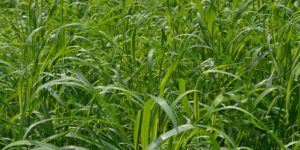Tea (Camellia sinendis) is a highland growing cash Crop which can be categorized in groups according to their colour i.e. black tea, yellow tea, white tea and purple tea.
ECOLOGICAL REQUIREMENTS
- CLIMATE : Tea does well in monsoon lands where high temperatures are encountered, long growing seasons and heavy rainfall for effective growth of tea bushes. A temperature of 21°c during growing is required for not less than 8 months.
- RELIEF: Almost all the commercially managed tea plantations are located in the highlands and on hilly slopes where natural drainage is good. Tea cannot tolerate stagnant water and waterlogged lowlands.
- SOILS: Tea does well in friable loam soils which permit a free percolation of water.
- SHADE: Tea shrubs grow better when shielded from strong sunlight or violent winds.
FIELD OPERATIONS
- LAND PREPARATION: Land preparation in tea growing is an important operation because any faulty technique may destroy the good structured soils or result in failure of the establishment of tea.
- The following steps are involved in land preparation;
- SOIL TESTING: This is so ascertain the soup PH if it is doable for growing tea.
- SURVEY AND PLANNING: To ascertain the gradient or slope if incase of heavy rains to avoid unnecessary losses.
- LAND CLEARING: Digging out trees and bushes and cultivating the land either by use of herbicides or mechanically.
- LAND PREPARATION: Use of herbicides to clear all vegetation i.e. CATAPULT 480 SLat a rate of 250 mls per 20 L of water then digging to enabling leveling of the ground.
- DIGGING OF PLANTING HOLES: This is done when the climatic conditions are favourable i.e. when rains are available.
- SPACING: The correct spacing of tea is 105 cm by 75 cm so that tea bushes do not overgrown early.
- MULCHING: It is advisable for tea to be mulched to avoid soil erosion and evaporation of water during the dry season. Mulching also helps in control of weeds.
- WEED CONTROL: Weeds are a major cause of poor growth in tea, it is advisable that farmers use a glyphosate most preferably CATAPULT 480SL at a rate of 250 mls per 20 L of water.
- FERTILIZER APPLICATION: Young tea require nitrogenous, pottasic and phosphatic fertilizers mixed with sand or dry manure as filler material for proper root development. Mature tea require to be too dressed with fertilizers rich in N, P2O5, and K2O.
- FOLIAR APPLICATION: Apply recommended doses of NPK fertilizers i.e LAVENDA TOTAL at a rate of 30ml in 20 L of water to enhance growth of buds in tea bushes.
MAJOR PESTS AND DISEASES IN TEA
PESTS
They include the following;
APHIDS:
Presence of cornicles which project backwards
Solution: It’s only avoided by timely prunning
TEA SCALES
Pale yellow spots on leaves which then turn yellow and drops pre maturely
Solution
- Spray with horticultural oil
MITES
Webbing covering leaves
Solution
- Spraying with a strong jet of water
DISEASES
They include the following;
ALGAL LEAF SPOTS
Gray, green or tan raised spots or blotches on leave margins
Solutions
- Avoid overhead irrigation
- Proper spacing of tea crops
BLISTER BLIGHT
Small pin hole size spots on young leaves
Solution
- Use of FOLIAR or systemic FUNGICIDES
CAMELLIA DIEBACK or CANCER
Leaves turning yellow and wilting
Solution
- Proper drainage of soils
RED ROOT DISEASE
Yellowing of foliage, wilting and eventual death of plants
Solution
- Remove affected crops and all adjacent crops to avoid spread.






